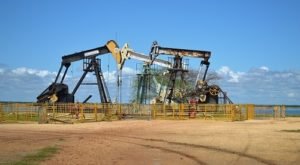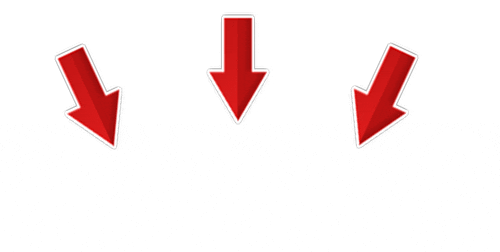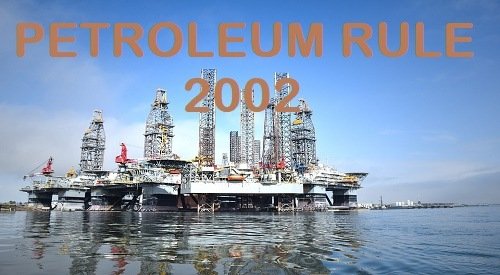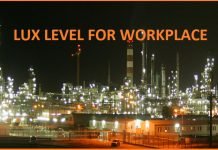These rules were enacted u/s 29 of the Petroleum Act, 1934. They came into force on 13-3-2002. They have 12 chapters, 202 rules, 5 Schedules and 20 Forms under the 2nd Schedule. Its abstract is given below PETROLEUM RULE 2002
Contents
Definitions: PETROLEUM RULE 2002
There are 35 definitions. Some are given below.
Adequate – When it comes to air flow, manner the flammable gasoline-air mixture below the decrease explosive or inflammable limit (LEL) or when it comes to fireplace frightening facilities, the ones as in line with conventional recognized standards or code of safety.
Competent person – means a person recognized by the Chief Controller of Explosives (CCE) or by an institution recognized by the CCE.
CLICK HERE FOR ? Noise Pollution Rules
Container – means a receptacle for petroleum of less than 1000 ltr. Capacity.
Tank – means a receptacle for petroleum of more than 1000 ltr. Capacity.
Electric apparatus – includes motors, starters, lamps, switches, junction boxes, fuses, cut-outs or any other appliance, equipment or fitting with operates electricity.
Hot work – means any work which involves welding, burning, soldering, brazing, blasting, chipping by spark-producing tools, use of certain power-driven tools, non-flameproof electrical equipment or equipment with internal combustion engines and including any other work which is likely to produce sufficient heat capable of igniting inflammable gases.
Protected area – means the safety distance specified by the licence condition under these rules.
Protected works – include dwelling house, assemble, dock, fuel yard, furnace, kiln, chimney, petroleum storage, public road, railway siding for oil and overhead high tension power lines.
Inspector – Sampling officer and testing officer are those authorized u/s 13, 14 and 17 respectively.
There are many other definitions also like installation, OISD, petroleum in bulk, service station, storage shed and some vehicles with the tank (R.2).
General Provisions (R 3 to 13): PETROLEUM RULE 2002
Delivery and despatch not possible without storage licence, Class B petroleum up to 15000 liters in airtight approved container can be dispatched to a person not holding a storage licence for immediate disposal.
DCP extinguisher should be carried with a container of more than 2500 liters. Rule not applicable for despatch to Defence Forces (R. 3). Approved of CC is necessary for class A petroleum container of more than 1-litre capacity and class B & C petroleum container of more than 5-liter capacity (R. 4).
CLICK HERE FOR ? Pollution Act 1981
Containers for Class A petroleum should be of sound material and construction, approved type and of the following minimum thickness of iron or steel sheet.
| Up to 10 | 0.443 (27 BG) |
| Exceeding 10 and up to 25 | 0.63 (24 BG) |
| Exceeding 25 and up to 50 | 0.80 (22 BG) |
| Exceeding 50 and up to 200 | 1.25 (18 BG) |
| Exceeding 200 and up to 300 | 1.59 (16 BG) |
The capacity of any container (Class A) shall not exceed 300 liters. Higher capacities for specified purpose need approval by CC 5% airspace necessary (R.5).
Minimum 5% and 3% airspace are necessary for class B and C petroleum respectively (R. 6).
Empty receptacles of class A or B petroleum should be kept securely if they contain vapor inside (R. 7).
Repair or hot work should be carried out after full cleaning of petroleum and its vapor or after certified by a competent person (R. 8).

Escape of petroleum to be prevented (R. 9). No person below the age of 18 or intoxicated shall be employed (R. 10). Smoking, fires, lights, matches etc. prohibited (R. 11).
CLICK HERE FOR ? Water Act
No person shall commit or allow others to commit any act which may lead to an accident by fire or explosion Compliance of these rules necessary. (R. 12). Fees (R. 13).
Chapter II: Importation of Petroleum (R. 14 to 27): PETROLEUM RULE 2002
Import licence necessary saves as otherwise exempted. Rules for importation by sea require firefighting facilities as per OSID Std. 156, plans of unloading facility, protected works within 500 mt, EIA and Risk Analysis Report, failure scenarios, LEL distances, damage distances, control measures, anchorage of ships, production of certificate and licence to the Collector of Customs, no landing without his permission, of barges or lighters and transhipment from one ship to another (R. 14 to 24).
Rules by importation by land also specify fixed places, submission of declaration (Form-I) certificate of storage accommodation (Form-II) and the licence to the Collector of Customs and no unloading without his permission (R. 25 to 27).
Chapter-III: Transport of Petroleum (R.28 to 101): PETROLEUM RULE 2002
Part – I: General (R. 28 to 32): PETROLEUM RULE 2002
No leaky tank or container containing petroleum shall be tendered for transport (R. 28). Filled containers should be kept upward (R. 29). Petroleum in bulk should not be carried with passengers or combustible cargo (R. 30). Smoking, matches, lighters etc. prohibited (R. 31). Loading or unloading should not be done between the hours of sunset and sunrise unless adequate lighting and FFE are kept ready (R. 32).
CLICK HERE FOR ? PETROLEUM ACT 1934
Part – II: Transport by water (R. 33 to 50): PETROLEUM RULE 2002
Licence from the licensing authority is necessary (R. 33). The vessel should be made of iron or steel and of ample dimension (R. 34). All tanks on ships should be fitted with manholes with screw cover, airtight joints, filling and suction pipe and valves nearby to the bottom and filling and discharge through pipe and valves only.
For class A petroleum. Tanks should have vent or relief valve with wire mesh (more than 11 meshes per linear centimeter) and similar ventilators to all spaces around the tank (R. 35).
Other provisions include exhaust outlet with sparks arrester, no petrol driven engine, quick action closing valve on fuel feed pipe, suitable ventilators four or more fire extinguishers, 0.20 m3 of dry sand, non-sparking hammer, red flag, life-boats, ventilation and cleaning of holds and tanks, responsibility of master of vessel, loading/unloading through armoured hose and metal pipes electrically continuous and free from leakage, prohibition of naked light, fire, and smoking, FFE in ready condition, no conveyance of petroleum class A with class B or C and no transport of un-tested petroleum (R. 36 to 50)
CLICK HERE FOR ? Radiation Protection Rules
Part-III: Coastwise Transport of Class A Petroleum not in bulk: PETROLEUM RULE 2002
Rule 51 to 61 provide conditions and precautions for such transport
Part-IV: Transport on Land by Vehicles (R.63): PETROLEUM RULE 2002
Application to the transport of petroleum class A in more than 100 ltr (R. 62). Tank vehicles should be built, tested and maintained as provisions in the 3rd schedule and of the type approved by the CC. Special safety fittings should be got approved (R. 63).
Class A and B petroleum can be filled up to 97% and Class C petroleum up to 98% of the gross carrying tank capacity (R. 64). Tank vehicle should not be used for other purpose or carry other articles except authorized by the CC (R 65, 69). Trailers (R. 66).
For every mechanically propelled vehicle used to carry petroleum otherwise than class B or C, the engine should be diesel engine or internal combustion engine, exhaust pipe should be in front of the tank or load and fitted with an approved spark arrester and silencer or muffler, the engine intake or air cleaner should have flame arrester, fire resisting shield between the cab and the tank or load (i.e rear side), fuel tank with stout steel guard and lock in the filling caps (R. 70).
CLICK HERE FOR ? LAWS ON ELECTRICAL SAFETY
Electrical installation should not exceed 24 volts, wiring should be heavily insulated and adequate for maximum load, should have over current protection (fuses or automatic circuit breakers) encased in covering, sealed junction boxes, heavy duty switch to cut off battery and generators, motors and switches of flameproof type if not installed within engine compartment (R. 71).
Portable fire extinguisher necessary (R. 72), Vehicle should be constantly attended by a person who knows these rules (R. 73), No parking on a public road or in a congested area or in 9 meter. Of any source of fire (R. 74), Licence to transport necessary (R. 75), Loading, unloading in a licensed premises only (R 76), Leaky defective or unlicensed tank vehicle should not be filled (R 77).
Precautions against static charges include earthing and electrical continuity of pipelines, earth box with a flexible cable and clamping device, earthing of the tank, filling pipe and chassis during loading dip-rod should not be completely raised above the liquid level during or within one minute of the completion of loading.
Filling rate should not exceed 1metre/sec until the filling pipe is completely submerged and thereafter it may be gradually increased but shall not exceed 6 meter/sec at the delivery end. The CC can permit a faster loading rate in case of petroleum having higher conductivity rate (R. 78).
Loading/unloading after stopping of the engine and battery isolated. Restart only after the tank and valves are securely closed (R. 79). No movement of the vehicle during loading/unloading (R. 80).
Product contamination to be avoided by selecting correct filling hose and refilling of the tank of class A petroleum with any other petroleum only after draining of residual oil (R.81) Except during loading/unloading the filling pipe, discharge faucet and dip pipe shall be kept securely closed (R. 83).
CLICK HERE FOR ? SAFETY INTERVIEW QUESTIONS
No loading/unloading during right hours except approved electric light provided (R. 83). No fire, light, smoking or articles to cause fire allowed on the vehicle (R. 84). No repair of the tank unless certified by a competent responsible person (R. 85). No petroleum to be carried with passengers save as provided (R. 86).
Part-V: Transport by pipelines (R. 87 to 101): PETROLEUM RULE 2002
This part is applicable to petroleum pipelines other than those in the area of operation of natural gas and oil or within refineries and installations (R. 87).
It provides for the right of way to acquired (R. 88), approval from the CC obtained (R. 89), design as per standard code or OISD Std. 141, made of suitable steel which is safe for conditions under which it is to be used, provision for expansion, contraction, prevention of excessive stresses by pass relief valves, pressure limiting stations, automatic shut down equipment to prevent pressure rise more than 10% of the designed internal pressure, isolation valves at different locations (R. 90), laying criteria (undergrounded as far as possible) (R,91), protection against corrosion (R. 92), hydraulic test (at 1.1 times the design internal pressure and maintaining for 24 hours) at interval of 12 months (R. 93), shut down procedure (R. 94), patrolling of pipeline, communication facilities at frequent intervals along the pipeline of length more than 2 km (R. 95), checking of gauges at thanks or booster pump stations at least once a year (R. 96), addition, alteration only after approval from the CC (R. 97) and power of the CC to require relay or repair for public safety (R. 99) and of inspection and examination (R. 100). The fire or major leakage in a pipeline or connected facilities should be reported immediately by the person-in-charge of the pipeline to the nearest magistrate or police station and by telegram to the CC, Nagpur (R. 101).
CLICK HERE FOR ? Hazardous Wastes Management Rules
Repair and maintenance of pipeline u/r 98 includes: PETROLEUM RULE 2002
- Inspection by an experienced engineer for assessment of work.
- Written work permits specifying precautions to be observed and procedure to be followed.
- The section of the pipeline shall be isolated, drained and purged with inert gas or steam or kept filled with water or treatment approved by the CC.
- Work of cutting and welding to be carried out by an experienced person in accordance with the permit.
- Only mechanical cutters shall be used for cutting the pipeline or any connection thereof unless it has been purged with an inert gas.
- Separation of pipeline or valve fitted to it only after providing the electrical bond between the parts to be separated and the bond shall not be broken till the parts have been rejoined.
- Reuse of the required section only after the hydro test as stated in rule 93.
Chapter-IV: Electrical Installation (R. 102 to 115): PETROLEUM RULE 2002
Electric wiring and apparatus to be used in any place where petroleum is refined, blended, stored, loaded or unloaded, should be in accordance with this chapter (R. 102).
Classification of Hazardous Area (R. 103, 104): PETROLEUM RULE 2002
Hazardous area means where (i) Petroleum having FP below 65°C or any inflammable gas or vapor capable of ignition is likely to be present or (ii) Petroleum or any inflammable liquid having FP above 65°C is likely to be refined, blended, handled or stored at or above its FP. (R. 103).
CLICK HERE FOR ? Water Act
It classified as under:
Zone 0 – Where inflammable gases/vapors are likely to be continuously present.
Zone 1 – Where they are likely to be present under normal operating conditions.
Zone 2 – Where they are likely to be present only under abnormal operating conditions or failure or rupture of equipment.
This zone 0 is more hazardous than zone 1 and zone 1 more hazardous than zone 2. On any question regarding the applicability of these divisions, the decision of the CC shall be final (R. 104).
The extent of the hazardous area is laid down in the 4th Schedule. The CC can increase or reduce it based on special circumstances (R. 105).
Fixed Electrical Apparatus (R. 106): PETROLEUM RULE 2002
Zone 0 – Intrinsically safe
Zone 1 – Intrinsically safe or a flameproof type or industrial type apparatus housed in an enclosure or in a room made safe by purging or pressurizing atmosphere and interlocked to stop electric supply automatically or to give the warning to stop it in case of failure of the purging or pressurizing system.
Zone 2 – Non sparking apparatus or Apparatus permitted in Dev. 1.
Fixed Electric Wiring (R. 107): PETROLEUM RULE 2002
It should be effectively sealed at all joints, mechanically protected, adequately supported and consisting of approved armored cable or metal sheathed cable or insulated cable in a galvanized conduits with approved flame proof fitting or mineral insulated cable of an approved type with a flameproof gland at all joints and details mentioned in the rule.
CLICK HERE FOR ? SAFE WORKING LOAD
Earthing and bounding (R. 108): PETROLEUM RULE 2002
Electric system and equipment should be earthed with the resistance of 4 ohms or a value that ensure the safe operation of the protective device in the circuit whichever is lower.
All non-current carrying metallic parts of electric apparatus or another metallic object should be earthed with the resistance of 10 ohms.
All joints in pipelines, valve, plants, storage tanks, associated facilities and equipment for petroleum shall be electrically bonded with the resistance value between each joint not exceeding 1 ohm.
Other Provisions: PETROLEUM RULE 2002
Cathode protection as in rule 109. Electrified railway system (overhead line and live contact rails) are not allowed within a refinery or an installation. They should be terminated outside the area where tank wagons are loaded or unloaded. Both the rails of spur lines shall be insulated from a railway siding which is used for the loading or unloading of tank wagons (R. 110).
Portable electric apparatus or lamp of 25 volts, approved by the CC (who can permit up to 55 volts) can be used in a hazardous area (R. 111). Maintenance to retain characteristics (R. 112). Repair and test after cutting off voltage. In zone 1 area, after gas-testing and certified safe by a competent person (R. 113). Certificate of electric installation by a competent person (R. 114). Precautions against corrosion (R. 115).
Chapter – V: Storage of Petroleum requiring licence (R. 116 to 135): PETROLEUM RULE 2002
Licence necessary (R. 116). Precautions against fire OISD Std. 117, DCP and other fire extinguishers (R. 117), Experienced supervisor necessary (R. 118), Cleanliness (R. 119), Drainage (R. 120).
CLICK HERE FOR ? EXCAVATION SAFETY
Wall or fence of at least 1.8 meter height to prevent unauthorized entry 1.2-meter height for service station (R. 121), Marking of capacity on tanks (R. 123), Construction of tank by iron or steel and as per IS. Foundation of noncombustible material. Air space 75% or as per Code (R. 124) and protection against corrosion by protective coating or cathode protection etc. (R. 125).
Before use the tank should be tested by water pressure by a competent person. It shall not be passed through any pipe or pump ordinarily used for the conveyance of petroleum. Proforma of certificate of such testing is given u/r 126.
Tanks should be earthed by two separate connection placed at opposite extremities. The resistance to earth shall be less than 7 ohm and that of the earth plate shall be less than 2 ohm, (R. 127) Testing of earth connection necessary once in 1 year by a competent person. Its record should be maintained (R. 128). No night working unless approved electric light provided as per chapter-IV (R. 129).
Certificate of Safety is required from a competent person by the licensing authority in a proforma given u/r 130.
Prior approval of specifications and plans of premises required u/r 131. Electric motor or internal combustion engine to drive pumps for pumping petroleum should be got approved by the CC (R. 132), Licence number should be marked on premises (R. 133), An extract of certain rules to be displayed (R. 134).
CLICK HERE FOR ? GRINDING SAFETY
Chapter-VI: Storage of Class – C Petroleum not requiring licence (R. 136 to 140): PETROLEUM RULE 2002
Provisions of previous chapter-V are not applicable to class-C petroleum to be stored without licence u/s 7 (R. 136). It shall not be stored together with other class of petroleum except as permitted by licence (R. 137).
Bulk storage tank should be approved by the CC. Tanks of more than 5000 litres capacity should have dyke or be placed inside a pit to contain at least the volume of the largest tank within it.
A drainage pipe with valve fitted outside shall be provided and kept closed. A distance of more than 1.5 metre shall be kept between the edge of dyke and any protected works (R. 138).
Class-C petroleum not in bulk, if exceeds at any one time 2500 litres be stored in a storage shed of which either the door way or opening are built up to a height 30 cm above the floor or the floor shall be sunk to a depth of 30 cm. (R. 139).
Prior report to store class C petroleum exceeding 5000 litres without licence shall be sent to the CC stating the location of the premises (R. 140).
Chapter-VII of licences (R. 141 to 161), Chap. IX of Tetraethyl lead mixture (R. 181 to 185), Chap. X of testing of petroleum (R. 186 to 199), Chap. XI of notice of accident (R. 200) and Chap. XII of exemption (R. 201, 202) are not discussed here. But abstract of Chap. VIII is given below.
Chapter- VIII: Refining of Petroleum (R. 162 to 180): PETROLEUM RULE 2002
Project report with specifications and plans showing the arrangements of tanks, stills, furnaces, electric installations, pump houses, drainage, ETP, FFE, fencing, gates and all plants and buildings where it is proposed to refine, crack, reform or blend, petroleum (it is called refinery in this chapter) shall be sent to the CC in triplicate and a scrutiny fee of Rs. 5000 (R. 162). A copy each of the approved plans shall be kept at the refinery (R. 163). Alterations are also to be approved (R. 164).
CLICK HERE FOR ? ELECTRICAL SAFETY
Fireproof materials should be used in buildings where petroleum is to be handled (R. 165). Storage tanks should be more than 90 metre away from any still, boiler or furnace (not applicable to class C fuel tank for a boiler if the tank capacity not exceeding 24 hours stock) (R. 166).
Storage tanks of LPG or its filling facility should be more than 90 metre away from any still, boiler or furnace or 30 metre away from any storage tank, pump-house or facility for blending or filling of petroleum or from any protected work (R. 167). Flare shall also be 90 metre away from any tanks, still, pump-house or any refinery activity or LPG (R. 168).
Effluent and drainage should not cause any pollution or harmful effect on animal or vegetable life. Weekly samples shall be drawn and tested in the refinery laboratory for their oil content, acidity, alkalinity and record be maintained (for at least 6 months) and shown to an Inspector.
The sewerage shall be independent of other drainage system. All drains shall have adequate capacity to prevent any flooding or backing up and of such construction to prevent leakage or be affected by the chemicals in contact. Trash racks (grills) to be fitted to prevent entry of rubbish to from a plug.
Manholes, vents to release gases fire traps and gas traps on the upstream side of the oil interceptors and fitted with vents to liberate gas at a safer height are also to be provided (R. 169).
No fire, source of heat or light capable of igniting inflammable vapours shall be allowed except in the firing space, stills or boilers. Smoking not permitted except in places specially approved by the CC (R. 170)
Work permit from a competent person is necessary for maintenance and repair work and entry in to confined spaces does drain or manhole. It shall be issued for a limited period during which known conditions will remain safe and after inspection and testing by the competent person, for gases content will be carried out by suitable trained persons and with standard instrument (R. 171).
CLICK HERE FOR ? REBAR SAFETY CAP
For fire control a well organised and trained fire fighting service with necessary materials and fixed mobile and portable equipment is required. OISD Std 116 should be followed. Adequate water supply should be available at all strategic points by means of an independent ring main or grid with isolating valves.
The main shall be kept constantly pressurised by two or more boosting pumps of adequate capacity and working automatically when pressure drop occurs in main. At least one boosting pump should be in-depended of power supply (diesel driven).
Shall be fitted with hydrants at convenient places not more than 30 metre apart. If mains water supply is likely to be interrupted, static water supply of adequate capacity shall be provided. Training for personnel necessary (R. 172).
All petroleum as it leave the stills may be pumped back to services tanks for fuel or refinery storage tanks and not be stored in the vicinity of stills and boilers (R. 173) Danger from static electricity shall be prevented (R. 174). Warning notices to be displayed (R. 175).
All above ground pipeline and cables shall be identified by taping, stencilling, colouring etc. Pipelines, valves, route of underground cables and route of overhead pipelines and cables crossing roads shall be protected against damage (R. 176).
CLICK HERE FOR ? EMERGENCY RESPONSE PLAN
All plants, instruments and equipment shall be inspected, tested and records maintained (R. 177). All operators shall be trained in safe operation, written procedures shall be established to start up, shut down, gas free plants and emergency actions. Supervisors shall ensure safe operation and safety facilities (R. 178).
An occurrence of fire shall be reported immediately to CC and to nearest police station (R 179). When refinery is closed down the area within the fence shall be cleared of all petroleum having FP <93 C as soon as possible (R. 180).
SHARE THIS ARTICLE WITH YOUR FRIENDS






